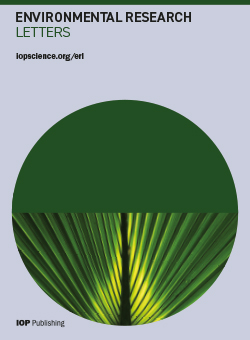Elevated CO2 concentrations contribute to a closer relationship between vegetation growth and water availability in the Northern Hemisphere mid-latitudes
IF 5.6
2区 环境科学与生态学
Q1 ENVIRONMENTAL SCIENCES
引用次数: 0
Abstract
The Northern Hemisphere mid-latitudes, with large human populations and terrestrial carbon sinks, have a high demand for and dependence on water resources. Despite the growing interest in vegetation responses to drought under climate change in this region, our understanding of changes in the relationship between vegetation growth and water availability (referred to as Rvw) remains limited. Here, we aim to explore the Rvw and its drivers in the Northern Hemisphere mid-latitudes between 1982 and 2015. We used the satellite-derived normalized difference vegetation index (NDVI) and the fine-resolution Palmer drought severity index (PDSI) as proxies for vegetation growth and water availability, respectively. The trend analysis results showed that changes in NDVI and PDSI were asynchronous over the past three decades. Moreover, we analyzed the spatiotemporal patterns of the correlation coefficient between NDVI and PDSI. The results indicated that the Rvw was getting closer in more areas over the period, but there were differences across ecosystems. Specifically, most croplands and grasslands were primarily constrained by water deficit, which was getting stronger; however, most forests were primarily constrained by water surplus, which was getting weaker. Furthermore, our random forest regression models indicated that the dominant driver of changes in the NDVI-PDSI correlation was atmospheric carbon dioxide (CO2) in more than 45% of grid cells. In addition, the partial correlation analysis results demonstrated that elevated CO2 concentrations not only boosted vegetation growth through the fertilizer effect but also indirectly enhanced water availability by improving water use efficiency. Overall, this study highlights the important role of atmospheric CO2 in mediating the Rvw under climate change, implying a potential link between vegetation greening and drought risk.二氧化碳浓度升高使北半球中纬度地区植被生长与水供应之间的关系更加密切
北半球中纬度地区拥有大量人口和陆地碳汇,对水资源的需求和依赖程度很高。尽管人们越来越关注该地区植被在气候变化下对干旱的响应,但我们对植被生长与水供应之间关系变化(简称 Rvw)的了解仍然有限。在此,我们旨在探索 1982 年至 2015 年间北半球中纬度地区的 Rvw 及其驱动因素。我们使用卫星衍生的归一化差异植被指数(NDVI)和精细分辨率帕尔默干旱严重程度指数(PDSI)分别作为植被生长和水分可用性的替代指标。趋势分析结果表明,在过去三十年中,NDVI 和 PDSI 的变化是不同步的。此外,我们还分析了 NDVI 和 PDSI 相关系数的时空变化规律。结果表明,在此期间,更多地区的 Rvw 越来越接近,但不同生态系统之间存在差异。具体而言,大多数耕地和草地主要受缺水制约,缺水制约越来越强;而大多数森林主要受过剩水制约,过剩水制约越来越弱。此外,我们的随机森林回归模型表明,在超过 45% 的网格单元中,NDVI-PDSI 相关性变化的主要驱动因素是大气二氧化碳(CO2)。此外,部分相关性分析结果表明,二氧化碳浓度的升高不仅通过肥料效应促进了植被生长,还通过提高水资源利用效率间接提高了水资源的可用性。总之,这项研究强调了大气中的二氧化碳在气候变化条件下介导 Rvw 的重要作用,暗示了植被绿化与干旱风险之间的潜在联系。
本文章由计算机程序翻译,如有差异,请以英文原文为准。
求助全文
约1分钟内获得全文
求助全文
来源期刊

Environmental Research Letters
环境科学-环境科学
CiteScore
11.90
自引率
4.50%
发文量
763
审稿时长
4.3 months
期刊介绍:
Environmental Research Letters (ERL) is a high-impact, open-access journal intended to be the meeting place of the research and policy communities concerned with environmental change and management.
The journal''s coverage reflects the increasingly interdisciplinary nature of environmental science, recognizing the wide-ranging contributions to the development of methods, tools and evaluation strategies relevant to the field. Submissions from across all components of the Earth system, i.e. land, atmosphere, cryosphere, biosphere and hydrosphere, and exchanges between these components are welcome.
 求助内容:
求助内容: 应助结果提醒方式:
应助结果提醒方式:


